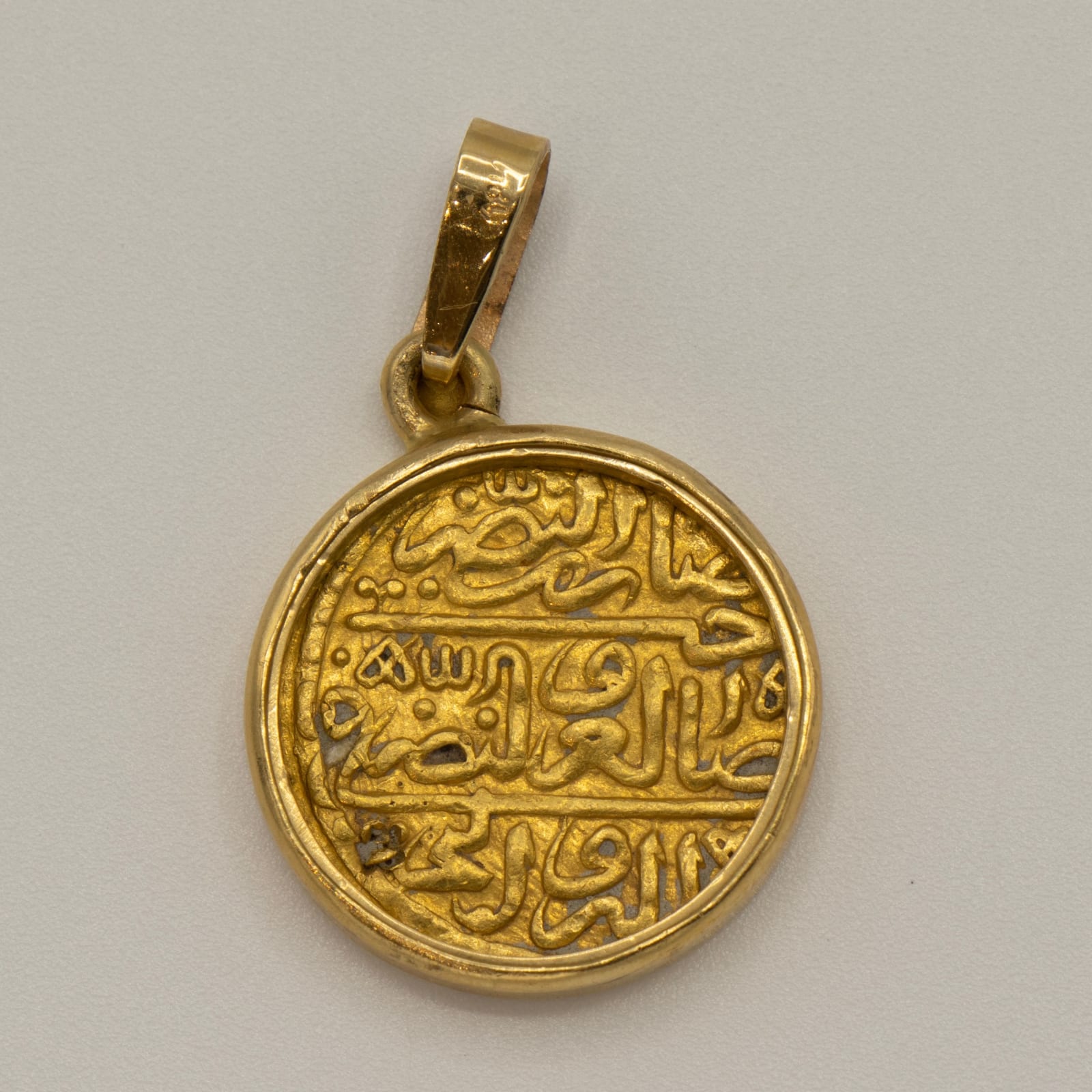Mamluk Gold Coin, 13th Century CE - 14th Century CE
Gold
6.8 Grams
height 3.3 cm
height 1 1/4 in
(including bail)
height 3.3 cm
height 1 1/4 in
(including bail)
BF.081
The history of the Mamluk rule in Egypt begins in the mid-13th century. Es-Salih, the ruler of Egypt, purchased a large number of Mamluks (a term meaning 'owned' that refers...
The history of the Mamluk rule in Egypt begins in the mid-13th century. Es-Salih, the ruler of Egypt, purchased a large number of Mamluks (a term meaning "owned" that refers to slaves) for his army. When the inhabitants of Cairo complained about their lawlessness he built barracks for the slaves on an island in the Nile, and they became known as Bahri (of the river) Mamluks. At the same time, Es-Salih married a very capable Turkish slave concubine named Shajar Al-Durr (tree of pearls), making her his queen. When Es-Salih died in 1249 A.D., St. Louis was in occupation of Damietta and Egypt was in a precarious position. Shajar Al-Durr, concealed the death of her husband and became the "power behind the throne". Soon, however, she married a Mamluk, thereby raising a slave to the throne, but Shajar Al-Durr remained in power through this first period of Mamluk rule. Mamluk spread from Egypt to Syria and the Bahri Mamluks ruled their empire from 1250-1382. Following this the Burji Mamluks ruled from 1382-1516, at which time the Ottoman Selim conquered Egypt, thereby ending the Mamluk reign of power. This radiant gold coin were minted during the period of Mamluk reign, continuing the Islamic tradition of depicting artistic, calligraphic inscriptions. Since the world itself is sacred in the Islamic religion, it is only fitting that the inscriptions on this Mamluk coin achieves an aesthetic level of beauty unsurpassed in the history of the written word.



